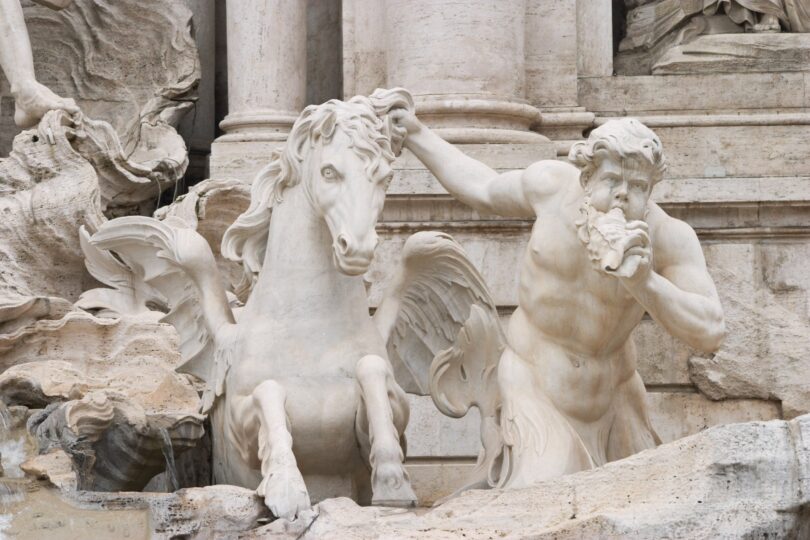Özge Sengelen
Add meaning to your world tour with legendary rituals and exploring different cities with their unique and legendary traditions, and perhaps you’ll find yourself returning to those places or luck will always be on your side
For approximately seven years, as much as our time allowed, we have traveled to the cities we dreamt of waking up in. Although our travels have not taken us beyond the European continent yet, Europe alone offers a wealth of experiences for a passionate traveler. Be it a weekend getaway or an extended tranquil vacation, we have explored 18 countries and 55 cities.
We have woken up in the cities we dreamed of. Waking up in a city we know nothing about has become our passion. Before visiting these dream cities, researching about them, learning their history, studying their location on the map, and, of course, making a list of the must-see places is just as enjoyable as being on the road for us. In the cities we explore, we often prioritize their unique iconic structures if they exist. And, of course, we try to discover their cuisine, culture and hidden stories. We also love experiencing the legendary rituals many tourists perform in some cities. Every tourist has performed a legendary ritual in at least one city they visited.
Fontana de Trevi
I want to start by clarifying my point with an example that will make it easier for you to understand but hold on tight because you might encounter a ritual in the following lines that you have never heard of before, and you will want to experience it in that city.
As many of us know, the Trevi Fountain, one of Rome’s symbols, is located in the heart of the city. This magnificent Baroque masterpiece is known not only for its historical and architectural significance but also for a well-known legendary ritual. When you visit the Trevi Fountain, amid the crowd taking photos, you might witness some people turning their backs to the fountain and throwing coins over their shoulders.
According to a legend, if you manage to throw small change into the fountain with your back turned, eyes closed, using your left hand over your right shoulder, you will return to Rome one day. The legend goes like this: When you throw your first coin into the fountain, you will return to Rome, throw a second coin to find love and throw a third coin to get married. Every day, hundreds of tourists fill the area around the fountain to perform this legendary ritual. We are among those who have tried it. I don’t know if the reason for our second visit to Rome was that we managed to throw a small change into the fountain the first time, but on our second visit, we were already in love and married. Let this be our legend. Perhaps throwing more than one coin speeds up the ritual.
Franciscan Church
With its magnificent sea, coastline and historical texture, Dubrovnik is one of the beloved cities in the Balkans. We tried another one of these legendary rituals here.
Let’s take those who want to try this ritual to Stradun Street, the heart of the city.
When you enter through Pile Gate and reach Stradun Street, you will be welcomed by the Onofrio Fountain. This fountain, dating back to the 15th century, was built to supply water to the city. According to legend, in those days, architects who designed this fountain and wasted even a single water droplet from it were fined.
Across the fountain stands the Franciscan Church. Inside the church, there is Europe’s oldest pharmacy for the curious. You can see protrusions shaped like animal heads on the pharmacy wall and crazy people trying to stand on these protrusions. In fact, these were designed as a gutter system to channel rainwater from the building to the ground. However, if you stand on these protrusions and take off your shirt, your whole year will be lucky, as tradition says. Watching those who attempted and succeeded in this feat was quite enjoyable, but we failed.

Schöner Brunnen
Nuremberg, known for its Gothic architecture, is one of Germany’s popular winter destinations. We visited Nuremberg during the winter, engulfed in Christmas excitement. The city, especially famous for its Christmas market, attracted much attention during this period. Of course, there are many other structures to see in the city.
One of these is the “Schöner Brunnen,” or “Beautiful Fountain.” This colorful Gothic structure from the 14th century might be the most beautiful and colorful fountain I have ever seen. Around the fountain, there are 40 colorful figures depicting the order of the world. Now, let’s talk about the legendary ritual related to this fountain. The black wrought iron fences around the fountain are adorned with a colored ring covered in gold leaf. If you go, don’t forget to make a wish by turning this ring. According to belief, the wishes of those who turn the ring come true.
Bled Island
Bled Lake in Slovenia was one of the highlights of our journey, with its tiny island in the middle being a must-see attraction; did you know it’s the only island in Slovenia?
To reach this tiny island, we boarded small boats called “pletna,” similar to gondolas, on the lake shore. We had an amazing 60-minute ride on the lake with a fixed round-trip fare. After spending 30 minutes exploring the island, we returned to the lakeshore on the same boat.
If you want, you can rent a canoe to reach Bled Island, or you can opt for a private boat for a slightly higher fee.

Upon arrival, you are greeted by the Church of the Assumption, painted completely white. However, to reach the church, you have to climb the 99 steps in front of you. I didn’t count, but there is, of course, a story behind it. According to tradition, the groom has to carry the bride and climb these 99 steps. Married couples visiting the island also perform the same ceremony, believing it brings them good luck.
Inside the church, there is a bell tower, and they say your wishes come true when you ring the bell.
While admiring the pristine white snow on the Alps during our journey, we added another ritual to our experiences.
Mostar Bridge
Now, let me tell you about a ritual we witnessed but didn’t participate in.
This ritual takes place on the Mostar Bridge in Bosnia-Herzegovina. This bridge, constructed over the Neretva River at a height of 25 meters (82 feet), symbolizes Bosnia-Herzegovina’s history.
Jumping from this bridge into the Neretva River has become a tradition for the youth there. The tradition of jumping from the bridge stems from the excitement and challenge of the height and the thrilling descent into the water.
Youngsters and brave tourists jump from the top of the bridge, 24 meters above the Neretva River, as a part of this ritual. There’s no legendary aspect, but this ritual symbolizes bravery and freedom. Moreover, it provides an exhilarating show for the spectators around the bridge.
Every city, whether in Europe or other continents, harbors unique stories and legendary rituals. Tossing a coin into the Trevi Fountain in Rome, standing on a tiny protrusion on the wall of the Franciscan Church in Dubrovnik, making a wish at the “Beautiful Fountain” in Nuremberg, and climbing the 99 steps to Bled Island in Slovenia are just a few examples.
Courtesy: Dailysabah







